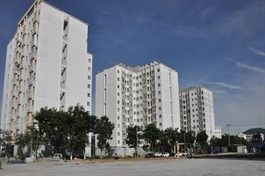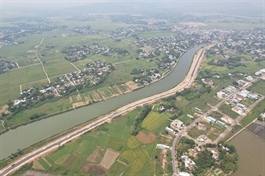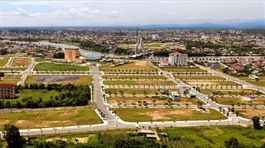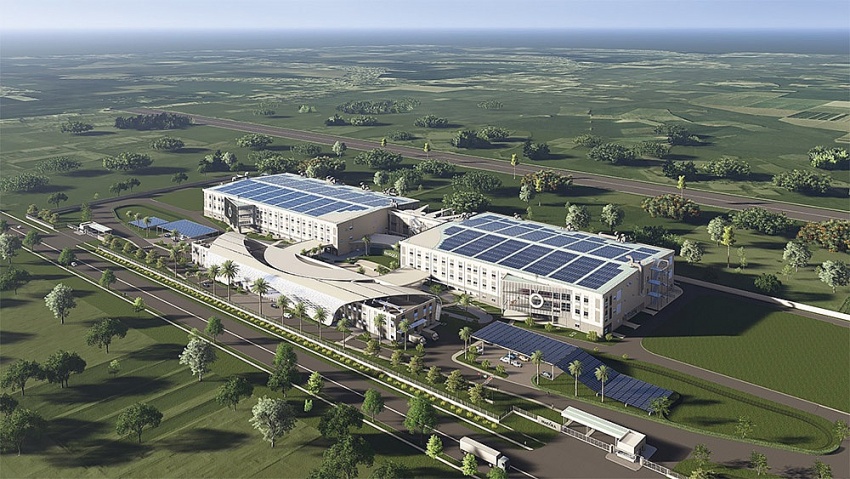Cost efficiencies now a must in construction
Cost efficiencies now a must in construction
Social housing development and boosting public investment disbursement are considered comprehensive solutions for the construction materials industry.

The prime minister and ministers discussed solutions for the industry at a conference last month, as it faces both consumption and revenue issues, leading to production stagnation and job losses.
According to the Ministry of Construction (MoC), there are 92 cement production lines nationwide with a total capacity of 122.34 million tonnes per year. For the past year, the consumption of clinker and cement has decreased. It is estimated that the total clinker and cement production output nationwide currently sits at about 44 million tonnes of cement, which reaches only 70-75 per cent of the total design capacity.
Other groups of construction materials such as tiles, sanitary ware, construction glass, and non-burnt building materials also face difficulties. For instance, since 2020, tile production output has only reached about 50-60 per cent of total design capacity. In 2023, the output reached about 360 million sq.m, only about 45 per cent of capacity.
Therefore, the MoC recommends that the solution is to promote public investment and infrastructure, remove difficulties for the real estate and housing market, and push ahead with plans to build at least one million social housing apartments.
Deputy Minister of Construction Nguyen Van Sinh said, “A positive solution to stimulate the vibrant construction materials market again is to promote public investment, accelerate projects to build transport infrastructure and irrigation, and invest in developing urban and rural infrastructure.”
He also added that many factories producing construction materials, especially cement, are under great financial pressure, facing difficulties due to big loans, rising production costs, and slow product consumption.
The MoC proposed to the prime minister and the State Bank of Vietnam to adjust policies on debt freezing, debt rescheduling, and lowering bank lending rates for debts of construction materials enterprises. This is in addition to a new credit package that offers low-income home buyers a preferred lending rate that is 3-5 per cent lower than that of commercial banks.
From a local perspective, Dong Nai People’s Committee said that the province has a large consumption of construction materials, and the total social investment of this locality is about VND100 trillion ($3.93 billion), which has made an important contribution to promoting production and consumption construction materials, reviewing and accelerating the disbursement of public investment capital, especially the Long Thanh airport project and expressways.
“Dong Nai is considered a great construction site because a series of key transportation infrastructure projects are being implemented in the area. Promoting investment in infrastructure has contributed to fuelling the provincial socioeconomic development, attracting domestic and foreign investment,’’ a representative of Dong Nai province said.
Eamon Ginley, general director of cement manufacturer INSEE Vietnam, proposed reducing interest rates for home buyers and preferential tax policies for companies.
“The laws on land and real estate business are core factors to help stimulate market demand. Quick implementation of new regulations is important. Floating interest rates for borrowers to buy and build houses need to be reduced below 9 per cent and lending rates for small- and medium-sized enterprises need to be reduced further,” Ginley said.
He added that cement companies must save themselves, by ensuring sustainable business and the lowest possible production cost structure. Sustainable business in the cement industry requires efficient energy management, a high co-processing ratio, and low clinker coefficient in cement products.
INSEE Vietnam has been using waste materials to replace coal for more than 15 years, through co-processing activities. The main product has 40 per cent lower CO2 emissions than traditional cement.
Meanwhile, the Vietnam Steel Association (VSA) has requested the Ministry of Industry and Trade to continue to guide and support steel export enterprises to promptly and effectively respond to trade defence cases against steel production abroad.
“The ministry needs to speed up the progress of building and submitting the Vietnam steel industry development strategy to 2030, associated with specific policies for green and sustainable growth of the steel industry,” said VSA chairman Nghiem Xuan Da. “There needs to be measures to manage investment in large-scale steel projects to control the balance of supply and demand, avoid wasting resources and land capital, and protect the environment.”
























